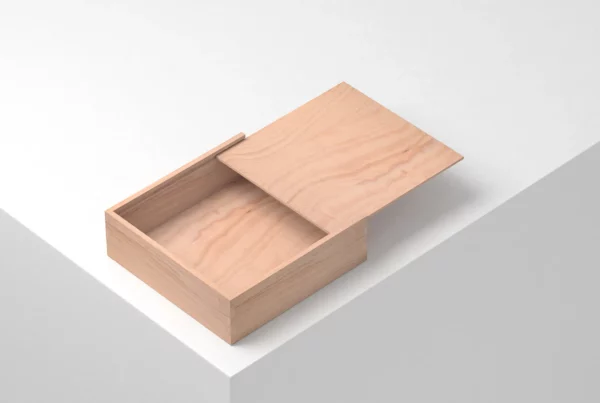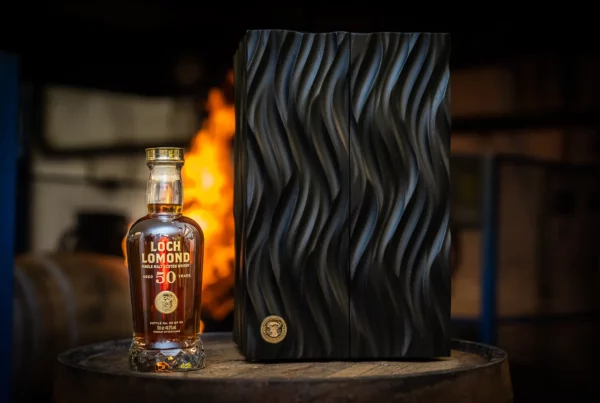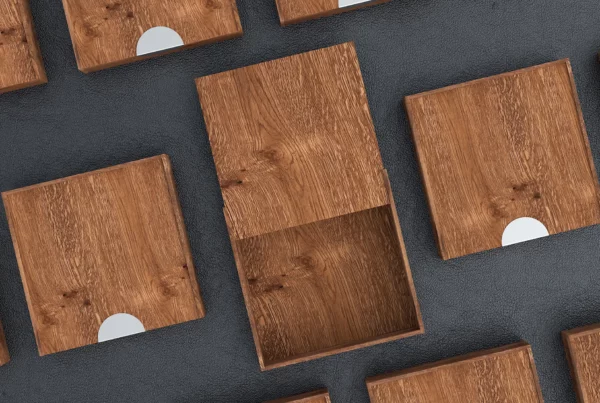The dual purpose of a custom menu holder
Menu holders often go unnoticed by customers – and that’s the point. When well-designed, they work quietly in the background, holding and protecting your menus while reinforcing your brand identity and enhancing the setting. A menu holder must be practical and durable, but it should also look the part. It needs to fit the aesthetic of your restaurant, café, hotel, or venue, aligning with the atmosphere you’ve curated for your guests.
Custom menu holders allow businesses to express their style in subtle but powerful ways. A sleek wooden holder may suggest heritage and craft, while a minimalist metal frame might suit a contemporary or industrial vibe. When presentation matters, the design of your menu holder becomes a branding tool, not just a piece of stationery.
Material selection: Where function meets flair
Choosing the right material is one of the most important decisions when designing a custom menu holder. It determines both the longevity of the product and how customers perceive your brand.
Wood
Wooden menu holders are ideal for venues looking to create a warm, natural feel. They’re often used in fine dining settings, rustic environments, boutique hotels, or anywhere where authenticity is valued. Finishes such as oak, ash, or walnut offer a range of tones and grains to match your décor.
Wood can also be laser engraved, painted, stained, or treated with oils to offer protection and aesthetic flair. When matched with tactile binding materials or brass fastenings, wooden holders create a premium, considered look.
Leather or faux leather
Used in traditional or high-end venues, leather menu holders convey timeless sophistication. They’re durable, easy to wipe clean, and age gracefully. Embossing or foil printing can be added for logos and branding elements.
Acrylic and metal
For modern and fast-paced hospitality settings, acrylic and metal offer clean lines and robust durability. These materials are often used in bars, coffee chains, or casual dining spaces where speed and functionality are key.
Each material has its own benefits – what matters is how it reflects your brand’s identity and survives in your environment. A beachfront café needs weather resistance. A wine bar with subdued lighting may favour darker tones and a tactile surface.
Designing for ease of use
A beautiful menu holder that’s difficult to handle is ultimately a missed opportunity. The most effective designs balance usability with aesthetics. Consider:
- Ease of changing menus: Clip systems, screw fastenings, or internal sleeves can make menu updates quick and hassle-free.
- Weight and handling: Holders should be substantial enough to feel quality but not so heavy that staff or guests struggle with them.
- Size and proportions: Oversized holders can dominate a table. Compact formats may not offer enough room for your full menu or wine list.
If you change your menu frequently – for example, with daily specials or seasonal offerings – the ability to swap pages easily without damaging the holder is essential. Restaurants that laminate individual sheets may prefer holders with elastic cords or corner tabs, while those that use multi-page menus often opt for screw-bound spines or internal rings.
Visual cohesion with your brand
Consistency in presentation is essential when building a recognisable and memorable brand. Menu holders are one of many physical brand touchpoints that influence perception.
Your holders should reflect your brand colours, fonts, materials, and tone. For example:
-
A Japanese izakaya might opt for dark wood with minimal branding and exposed grain
-
A contemporary vegan café may lean towards pale birch or cork-style textures with rounded corners
-
A wine cellar restaurant might use thick walnut covers with deep embossing and matte paper inserts
Even subtle design choices – such as the edge finish, stitching colour, or logo placement – contribute to the whole experience. These touches don’t go unnoticed by customers who care about detail, especially in luxury or design-led venues.
Weathering the real world: Durability matters
Your menu holders will be handled by hundreds of hands each week. They’ll be splashed, bent, rubbed, dropped, and passed across tables. So practicality isn’t just a consideration – it’s a necessity.
This is particularly true for:
- Outdoor venues: UV exposure, humidity, or rain can degrade low-quality materials. Wooden holders should be sealed, and synthetic options may offer better resistance.
- High-volume locations: Cafés or hotel bars with quick service need menu holders that are easy to clean, won’t fray, and can be replaced affordably.
- Luxury venues: These may prefer long-lasting, refined materials that develop character over time but still maintain their shape and feel.
At Moran’s, we work closely with our clients to design holders that last and age well, using materials that match both your style and usage environment.
Small format, big impact
It’s easy to underestimate how much influence something as simple as a menu holder can have on the customer experience. But in high-end settings, every detail matters.
A wobbly, poorly aligned, or stained menu holder detracts from the quality of the food and service you offer. On the other hand, a thoughtfully designed holder adds reassurance and polish. It tells customers that you care about every step of their journey with you – even the one that begins when they pick up your drinks list.
Let’s craft something your customers will remember
At Moran’s, we don’t just produce menu holders – we craft brand assets. From natural wood to custom engraving and tailored inserts, every detail is designed with your venue and customer in mind.
Whether you’re refreshing your existing materials or launching a new concept, our team can guide you through the process, from material selection to the finishing touches. Let’s build a menu presentation that says everything your brand stands for.






